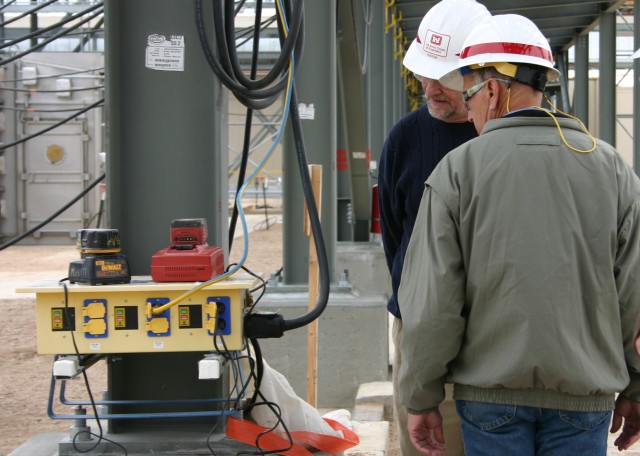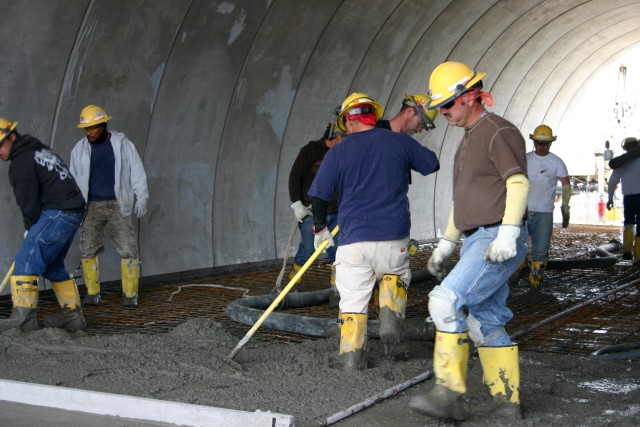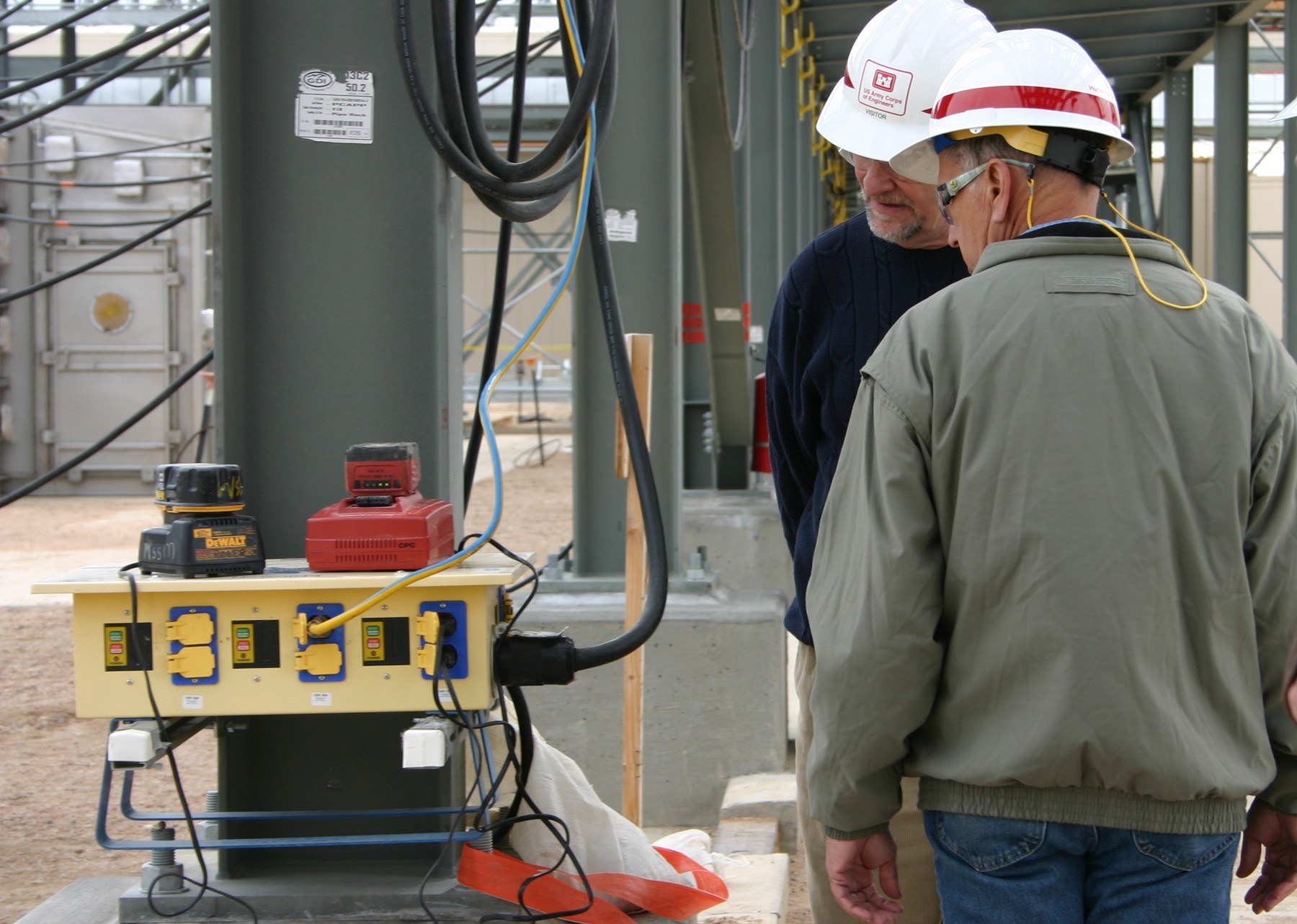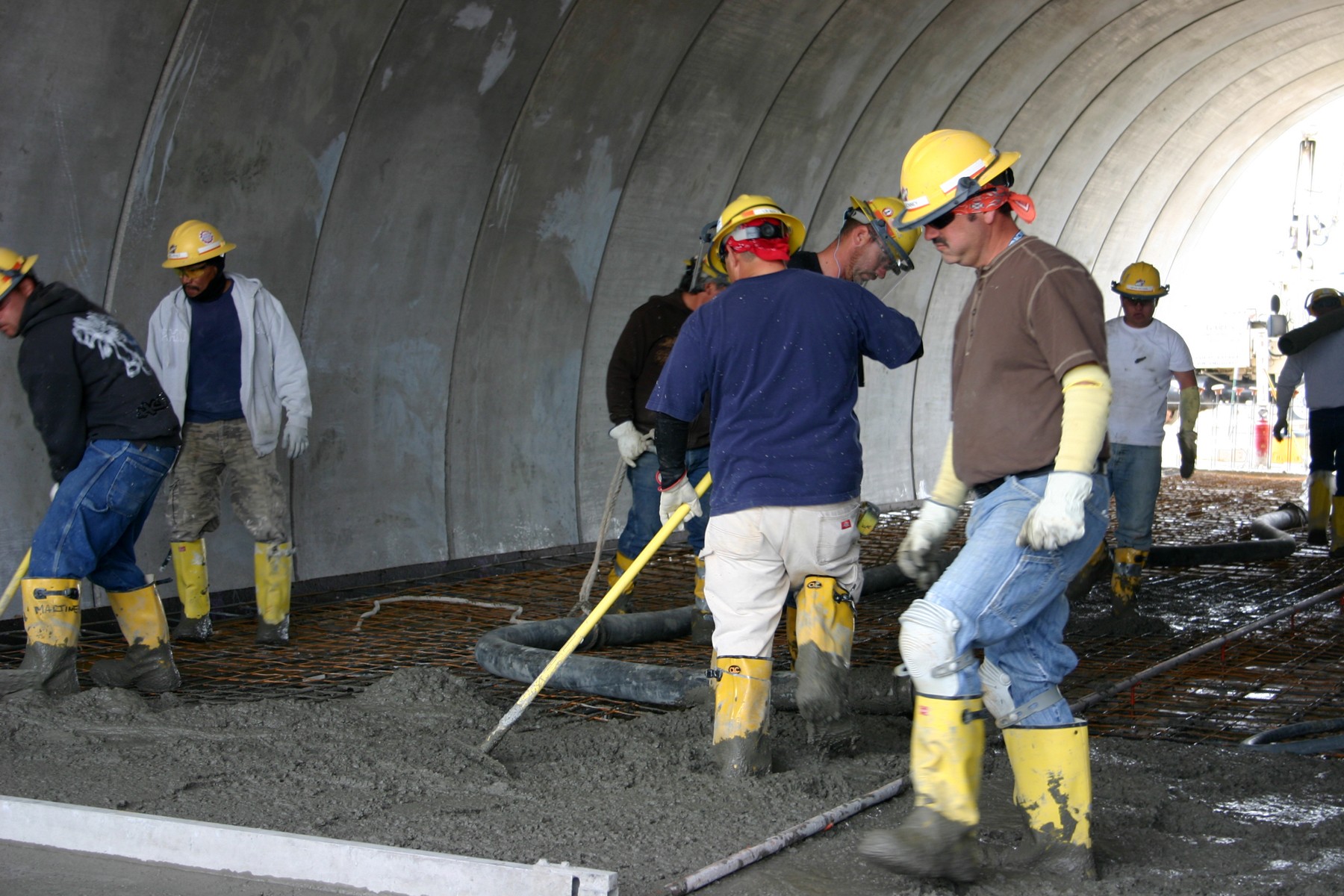PUEBLO, Colo. Aca,!" A construction project here is one of only two sites where the U.S. Army Engineering and Support Center, Huntsville (Ala.) is working with partners to build chemical agent destruction facilities.
Huntsville Center also is working with the Assembled Chemical Weapons Alternative program office to manage the construction project in Richmond, Ky. Actual construction management is not a normal mission for the Huntsville Center.
HuntsvilleAca,!a,,cs Chemical Demilitarization Program serves as the U.S. Army Corps of EngineersAca,!a,,c program manager for facility design and construction of the complex facilities throughout the continental U.S. The ACWA facilities will use either neutralization followed by biotreatment or the super critical water oxidation post treatment technologies to safely destroy the remaining portion of the nationAca,!a,,cs stockpile of aging chemical weapons at Pueblo or Richmond.
The Pueblo Chemical Depot has a stockpile of chemical weapons in the U.S. totaling more than 2,600 tons of mustard blister agent. In September 2002 a contract currently valued at $1.1 billion was awarded to Bechtel National Inc. to design and construct the Pueblo Chemical Agent-Destruction Pilot Plant at the Pueblo Chemical Depot.
Aca,!A"PCAPP construction is now 49 percent complete,Aca,!A? said Fawzy Makar, the deputy director for the Chemical Demilitarization Directorate and former resident engineer of the Pueblo project. Aca,!A"The facility was originally slated for construction completion in 2013. However, under a proposed accelerated timeline that is pending Office of the Secretary of Defense approval and contract modification, the facility will be completed and operational by April 2012. Once completed, the facility will have three years Aca,!" working 24/7 Aca,!" to complete destruction of the chemical weapons stored at Pueblo.Aca,!A?
According to Jim Bongers, chief, Technical Support/Quality Assurance Branch, Pueblo Resident Office, the contractor is focusing the construction effort on the primary buildings for processing the chemical munitions.
Aca,!A"The enhanced reconfiguration building (where the mustard projectile and mortar rounds are unboxed, fed into the process and have energetics removed) had the exterior walls and roof completed in February,Aca,!A? Bongers said. Aca,!A"The current work involves erecting concrete masonry block walls and spraying fireproofing on the structural steel. Piping, lighting, electrical conduit and cable tray, and interior walls are being installed in the agent processing building (where the agent is removed from the munitions; this agent is neutralized in hydrolyzers and the munitions body is heated to destroy any remaining agent). The architectural finishes and interior electrical work are being done in the control and support building (where the workers have locker rooms, maintenance areas and the control room that will operate the plant). The first systems will be released for systemization later this year.Aca,!A?
The process for destroying the Pueblo munitions is a combination of neutralization and biotreatment. The process involves five steps:
Aca,!Ac Removing the energetics. Robotic equipment removes energetics (explosives) from the weapon. The energetics will be disposed of at a permitted facility off site.
Aca,!Ac Removing the mustard agent. The inside of the weapon is remotely accessed and mustard agent is washed out with high-pressure water.
Aca,!Ac Neutralization of the mustard agent. The mustard agent is mixed with hot water. The resulting mixture is neutralized with a caustic solution. The byproduct is called hydrolysate.
Aca,!Ac Biotreatment. The hydrolysate is treated with microbes that break down the solution into water and biosludge. The water is recovered for reuse in the process and the biosludge is secured in containers for disposal at an off-site permitted facility.
Aca,!Ac Disposing of the metal parts. Metal parts are heated to 1,000 degrees Fahrenheit for 15 minutes and can then be recycled.
At the end of the three-year destruction phase, the buildings where the chemical munitions were processed will be torn down and the area remediated.
Safety of the work force as well as the safety of the community is emphasized throughout the facility construction and weapons destruction process.
Throughout the construction of the facility, the contractor has logged more than 3 million safe
man-hours without a lost time incident, and was recognized by the Occupational Safety and Health Administration last year with the Voluntary Protection Program Star Status.
This history of safe construction is no accident. Huntsville CenterAca,!a,,cs safety specialist assists the resident office by conducting quarterly inspections of the site. Victor Taylor, chief of HuntsvilleAca,!a,,cs Safety Office, and Charles Rollins, an occupational health and safety specialist, inspected the site March 23.
Aca,!A"The Bechtel engineering and construction team at PCAPP continues to maintain an outstanding safety and environmental compliance program through their diligence and management's participation at all levels,Aca,!A? Rollins said. Aca,!A"In addition, from day one Bechtel has promoted a team effort approach ensuring total employee commitment to safety at all levels.Aca,!A?
Huntsville Center designed and managed the construction of seven other facilities in the U.S. for the destruction of chemical weapons. Currently, the operations at three facilities are complete. The facility on Johnston Atoll has been torn down and the area remediated.




Social Sharing